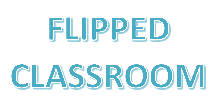A case study of the flipped classroom model in a rigid-body mechanics course
DOI:
https://doi.org/10.13140/RG.2.2.11020.87683Keywords:
flipped classroom, problem solving, educational videosAbstract
The objective of this article is to present an investigation in which the case study method was used using a group control, to apply the inverted class model in a rigid body mechanics course. The students of the group have received the course with the investment model, while the control group with the traditional method is based on lectures. This qualitative-quantitative study collected information from two sources: final course grades and student surveys. As a result, the final scores of group B were also higher than group A (p = 0.039). Group B ratings related to the percentage of pre-recorded conference reviews. In the surveys, group B positively rated the application of the model at 8,3 ± 1,4. In conclusion, that the inverted class promotes student self-learning, which is recommended in the contents related to Physics and Mathematics
Downloads
References
A. Roehl, S. L. Reddy, & G. J. Shannon, «The flipped classroom: An opportunity to engage millennial students through active learning strategies», J. Fam. Consum. Sci., vol. 105, n 2, pp. 44–49, 2013
M. Prince, «Does active learning work? A review of the research», J. Eng. Educ. Washingt., vol. 93, n. July, pp. 223–232, 2004
J. A. Bonwell, & C. Eison, «Active learning: Creating excitement in the classroom», George Was. Washington D.C.: School of Education an Human Development, 1991
J. Bergmann & A. Sams, «Flip Your Classroom Reach Every Student in Every Class Every Day», Get Abstr. Compress. Knowl, pp. 1–5, 2014
N. B. Milman, «The Flipped Classroom Strategy: What is it and how can it be used? », Distance Learn., vol. 11, n 4, pp. 9–11, 2012
B. Tucker, «The Flipped Classroom», Educ. Next, vol. 12, n 1, pp. 2–10, 2012
N. Blair, «Technology integration for the new 21st century learner», Principal, n Janurary/February, pp. 8–13, 2012
B. Sohrabi & H. Iraj, «Implementing flipped classroom using digital media: A comparison of two demographically different groups perceptions», Comput. Human Behav., vol. 60, pp. 514–524, 2016
Y. Hao & K. S. Lee, «Teaching in flipped classrooms: Exploring pre-service teachers’ concerns», Comput. Human Behav., vol. 57, pp. 250–260, 2016
D. R. Webster, D. M. Majerich & J. Luo, «Flippin’ Fluid Mechanics – Quasi-experimental Pre-test and Post-test Comparison Using Two Groups», Bull. Am. Phys. Soc., vol. 59, n n° 20, p. 485, 2014
S. L. Lee, Hackett & H. Estrada, «Evaluation of a Flipped Classroom in Mechanics of Materials», in 122nd ASEE Annual Conference & Exposition, 2015
C. Fredericks, S. Rayyan, R. Teodorescu, T. Balint, D. Seaton & D. E. Pritchard, «From flipped to open instruction: The mechanics online course», in Sixth Conference of MIT’s Learning International Network Consortium, 2013
S. Bates & R. Galloway, «The inverted classroom in a large enrolment introductory physics course: a case study», in Higher Education Academy STEM Conference, 2012
C. Di Rienzo & G. Lilly, «Online Versus Face-to-Face: Does Delivery Method Matter for Undergraduate Business School Learning?», Bus. Educ. Accredit., vol. 6, n 1, pp. 1–12, 2014
J. Enfield, «Looking at the Impact of the Flipped Classroom Model of Instruction on Undergraduate Multimedia Students at CSUN», TechTrends, vol. 57, n 6, pp. 14–27, 2013
M. J. Lage, G. J. Platt, and M. Treglia, «Inverting the Classroom: A Gateway to Creating an Inclusive Learning Environment», J. Econ. Educ., vol. 31, n 1, pp. 30–43, 2000
A. Butt, «Student views on the use of a flipped classroom approach: Evidence from Australia», Bus. Educ. Accredit., vol. 6, n 1, pp. 33–43, 2014
Y. Hao, «Middle school students’ flipped learning readiness in foreign language classrooms: Exploring its relationship with personal characteristics and individual circumstances», Comput. Human Behav., vol. 59, pp. 295–303, 2016
R. C. Hibbeler, «Engineering Mechanics Statics», 12th. New Jersey, 2010
R. C. Hibbeler, «Engineering Mechanics Dynamics», 10th ed. New Jersey, 2004
YouTube, «Youtube.com», 2016. [Online]. Available: http://youtube.com. 2016

Published
How to Cite
Issue
Section
The opinions expressed by the authors do not necessarily reflect the position of the editor of the publication or UCLA. The total or partial reproduction of the texts published here is authorized, provided that the complete source and electronic address of this journal is cited. Authors have the right to use their articles for any purpose as long as it is done nonprofit. The authors can post on the internet or any other media the final approved version of their work.






.png)




